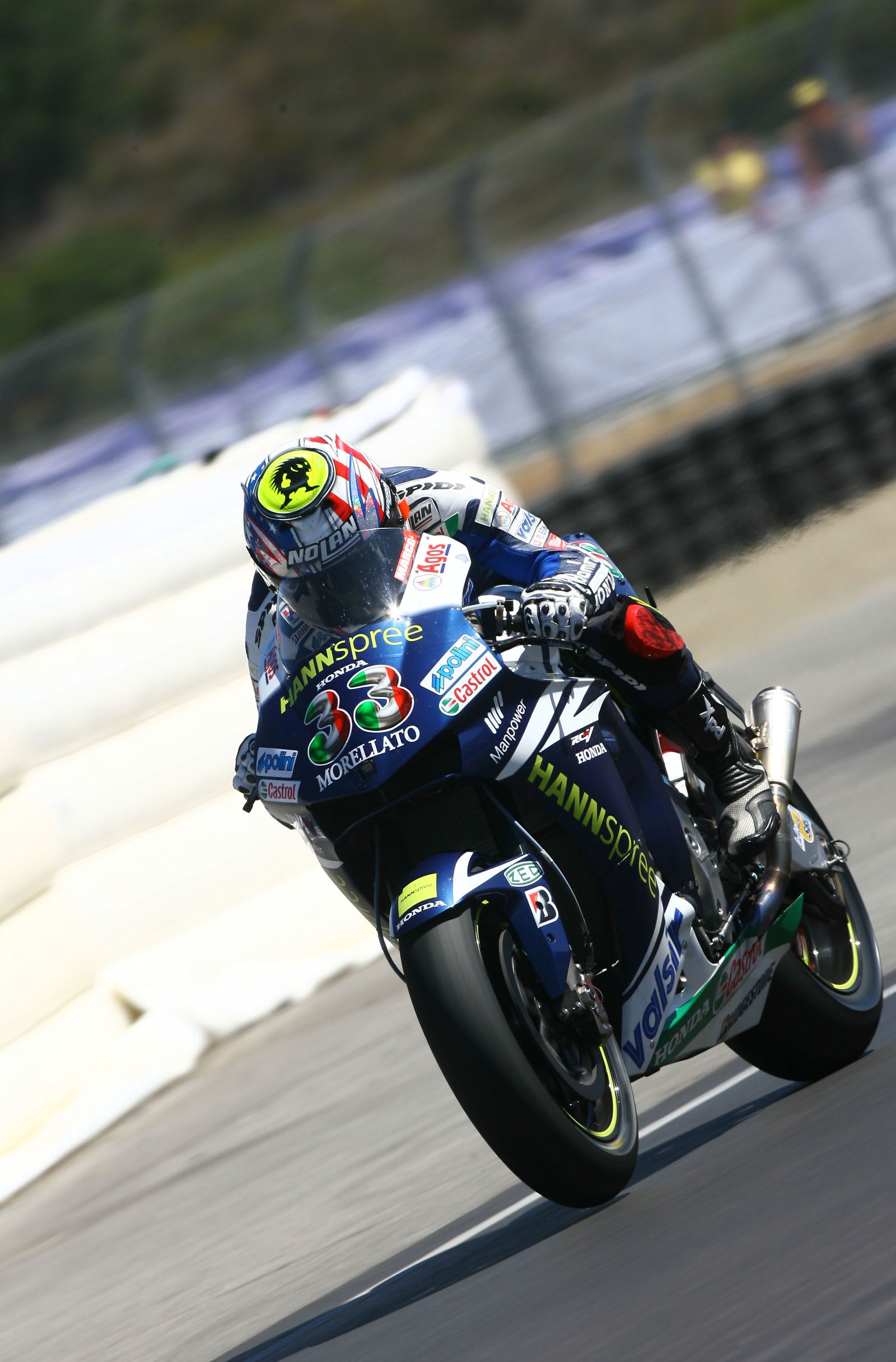MotoGP safety.
By Lynne Huntting
Safety is a big concern for the FIM (Federation Internationale Motorcyclist) and motorcycle riders.
Dorna Sports S.L. (MotoGP commercial rights holders) and FIM set up the MotoGP Safety Committee, and currently it is composed of three riders - Valentino Rossi, Loris Capirossi and Kenny Roberts Jr., plus MotoGP race director Paul Butler. They meet often, usually at race meetings, and make recommendations.

By Lynne Huntting
Safety is a big concern for the FIM (Federation Internationale Motorcyclist) and motorcycle riders.
Dorna Sports S.L. (MotoGP commercial rights holders) and FIM set up the MotoGP Safety Committee, and currently it is composed of three riders - Valentino Rossi, Loris Capirossi and Kenny Roberts Jr., plus MotoGP race director Paul Butler. They meet often, usually at race meetings, and make recommendations.
MotoGP has an "unbelievably good safety record" according to Nick Harris, Dorna Communicator. There hasn't been a fatality since the death of Daijiro Kato in the 2003 MotoGP opening round at Suzuka. MotoGP has made improvements with medical response. FIM does random drug testing and has had no positive tests.
Harris said Mazda Raceway Laguna Seca - site of this weekend's Red Bull U.S. Grand Prix - has made "staggering safety improvements."
There are a lot of accidents in motorcycle racing, so head and body protection is paramount. Riders are encased head to toe with protection, including helmet, leathers, knee sliders, boots and gloves. Everything the rider wears must be flexible, strong and lightweight.
Helmets are especially important. The exterior must be strong to dissipate energy, the custom-fit interior must cushion the head, the visor must protect the rider from flying objects and avoid misting or fogging - all while allowing maximum visibility. The fasteners must remain intact and not loosen. Motorcycle riders don't have radios as do car racers, so the acoustics are crucial and purpose-built. For team communications teams rely on good old-fashioned Pit Boards. Humidity, sweating and ventilation are a problem, especially at muggy events. Some riders use helmet dryers between sessions.
Many riders have four helmets at each race, including a spare and one for rain which is specifically modified for the preventing of misting or fogging.
Points leader and this weekend's pole sitter Casey Stoner wears a Nolan helmet. Nicky Hayden, twice winner of the Red Bull U.S. Grand Prix, wears an Arai helmet - the most popular with MotoGP riders - and five-time MotoGP champion Valentino Rossi wears an AGV helmet. Other manufacturers include Shark, Shoei, Suomy and Z-Lite. The rider's personality is often reflected on his helmet, as it is in most forms of motorsports. Rossi changes designs often. Some riders have mascots such as Stoner's (Aussie) kangaroo or Melandri's hedgehog. This weekend Colin Edwards has a special one-off Texas Tornado design to reflect his birthplace.
Most riders wear kangaroo skin leathers, which have more resistance and flexibility than cow hide and are lighter in weight. In addition to the aerodynamic back protectors the leathers have a built-in spinal column protection unit and chest protector, mainly constructed from carbon fibre, kevlar and titanium.
Rossi wears a Dainese 7.7 pound/3.5 kg suit, while Dani Pedrosa wears a 6.6 pound/3 kg suit from Alpinestars, a manufacturer used by many of the MotoGP riders. Riders can wear plastic rain suits over leathers to prevent the leathers doubling in weight from water absorption.
As with helmets, the leathers are more ad space for the rider and team, making the rider a moving billboard.
Because there is such a rare chance of fire in motorcycle racing, fireproof clothing isn't mandated. Underneath the leathers, many riders wear filmy ultra-light black mesh body suits. Some also have cooling systems as part of their leathers, such as cool vests with gel-cooled water, powered by ultra-light batteries and micro-pumps. Some riders utilize the exterior back hump to hold a drink bottle, linked to the helmet.
Gloves have to be lightweight, flexible but with extra protection on impact locations such as the outward digits, thumb, wrist and palm.
Boots also have to be flexible and ultra-light for the riders motions, yet protective of the feet and ankles. Many shoes combine leather and high-tech materials such as carbon fibre and kevlar. Some riders opt for a stiffer shoe, while others prefer looser shoes. The MotoGP doctor said his best-case scenario would be the combination of a stiffer right shoe for braking and a softer left shoe for gearing. But the doctor sighs that this won't happen soon in real life.
Knee sliders or knee pads are separate from the leathers. Because of so much low riding, leaning into the curves - the thermoplastic compound knee protection is replaced quite frequently, sometimes after each session.
The neck must be free and the riders need to 'defend' themselves when rolling after a spill or tumble. So don't look for any head and neck restraints any time soon, although a South African company has been hard at work designing one specific for motorcycle riders.
Some riders have data acquisition sensors (patches) on their bodies which record g-loads, pulse, body temperature, pressure points, or impact information. However, MotoGP does not utilise head trauma/concussion baseline testing - testing a driver pre-season and then again after a crash.
FIM has a Safety Officer - Claude Danis, and a Medical Director, DR. Claudio Macchiagodena.

